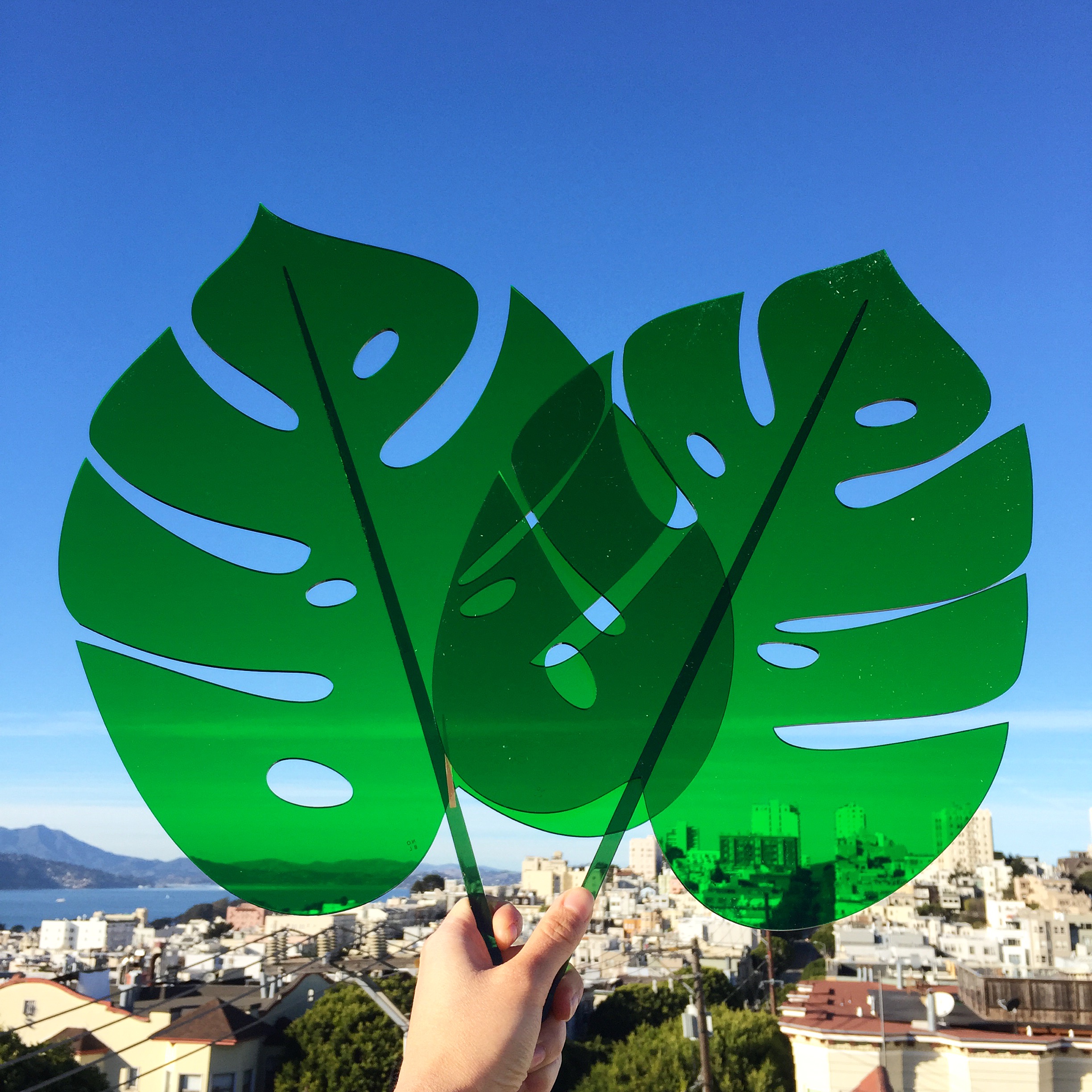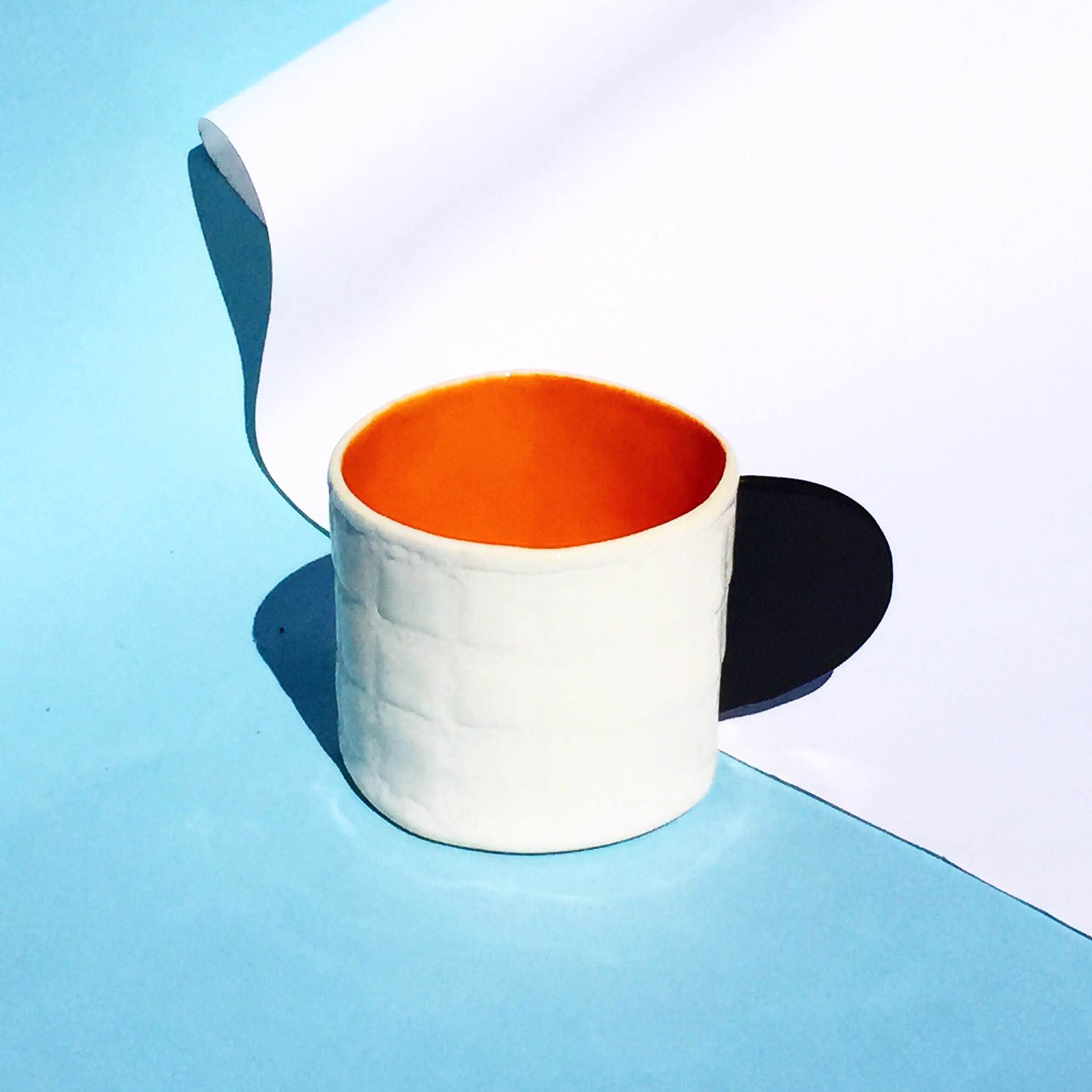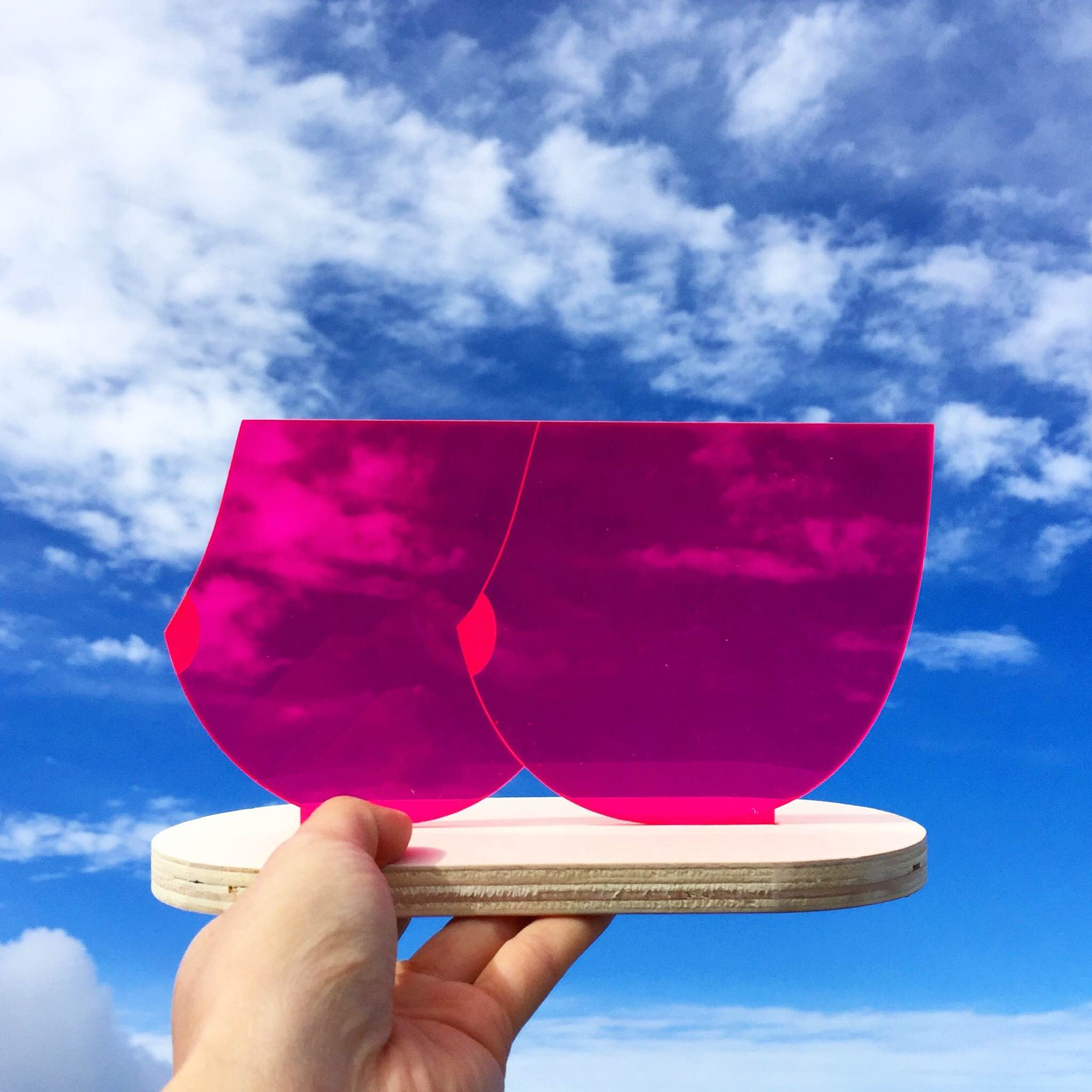Future So Bright for Artist Nobel Truong
When you graduate high school at 16, there's a good chance you're gonna be ahead of the game. For artist and producer Nobel Truong, it's certainly proving true. After graduating from UC Berkeley with a degree in philosophy, she crossed the pond to attend Cambridge and study philosophy and business. Degrees which, at first glance seem a bit incongruous, but have served her artistic existence well. "Keeping an open mind and being flexible is something that is important to bring to any business model," she says. "Even if you do not work with a physical product, it is always important to consider the different ways something can be executed."
From ceramics and furniture to prints, acrylics, and textiles, Nobel has her creative hands in all mediums, producing projects out of Nobl, her creative studio.
We checked in with the San Francisco-based designer to get the goods on her process, her seemingly endless supply of creative juice, and why she prefers transparency in both business and her materials.






Where did the idea for the illuminated cacti come from?
I had a dimly lit apartment and needed more lighting in the space. I had also just learned how to use a laser cutter and wanted to work with acrylic-- plastics are the best material to cut on a laser cutter. I was really inspired by the Memphis Group and was a bit nostalgic of the mid-century decor and architecture of my hometown in Southern California, so I felt succulent themed lighting would be most fitting. I had some idea of a succulent lamp from the start, but it went through a few iterations before it became the product that I have now. I debuted the cactus lamp at Pop Up Flea in Los Angeles in September and the support for the product has been so great that I began making more fluorescent acrylic pieces and larger scale cacti.
Who are some designers you admire?
Marcel Breuer, Le Corbusier, and Mies van der Rohe. I am a huge admirer of the structural forms and function that marked Bauhaus architecture and the play on colors and shapes pioneered by the Memphis Group. I also draw a lot of inspiration from the works of Noguchi, Ray and Charles Eames, and Nelson for the furniture I design and build. I am particularly interested in mid-century modern furniture and home decor. All in all, I think there is an appeal to good design which transcends different creative fields and it is for this reason that I look to architects, industrial designers, and graphic designers for inspiration in my work.
How do you feel being female in the male-dominated design space?
It definitely has its challenges and there have been times where I felt intimidated by my peers in the field, but I have also learned that if you are passionate about your work and you are driven in what you do, then gender really does not matter. As I continue to work in the field, the peers I used to be intimidated by have now become sources of inspiration and motivation. Any doubts I have had in my ability and work are now new projects or challenges to take on. I have always worked by the motto that "you can do anything" and so I never really saw issue with hauling my own lumber to the shop among the primarily male woodshop community. Beyond this, I also often look to Florence Knoll, Ray Eames, and other female figures in the industrial design space as inspiration to continue pursuing the field and not let the fact that I am in a male-dominated design space steer me away from my creative endeavors.
"If you are passionate about your work gender really does not matter."
Tweet this.
How did you make the transition from objects to furniture? Has working in a larger medium been more challenging than expected? In what ways?
Actually, a lot of my work grew out of necessity. I started with housewares because when I had housemates the only furnishings I had control over were my bowls and cups. So, I took ceramics classes and made bowls and cups. I moved into my own apartment this January and couldn't find furniture that fit my aesthetic, was conservatively priced, and was also space conscious. What began as an attempt to make something I could not find in the market eventually amounted to me learning how to operate woodworking tools and CNC machines. My first woodworking project was actually a sofa for my apartment after taking a woodworking safety class and spending a few days researching and sourcing materials.
The transition to a larger medium definitely has its own learning curve, but it's something that is made a lot easier with modern manufacturing techniques and CNC machines. There are a lot more things to consider in a piece that will occupy a 10ftx10ft space as opposed to a small 3in cup. How structures are supported and how they will look as people move around them creates a different set of design problems. All that said, I have been really enjoying the challenges of building large structures and am constantly thinking about ways to incorporate the simplicity in my smaller scale designs in my large scale build-outs.
Creativity is most often associated with the individual, but is there a social dimension to creativity that's particularly relevant in the 21st century. Have you found the need to mesh these two concepts?
I definitely think there is a social dimension to creativity, but I do not think it is one to overshadow one's creative vision. What I mean by this is that I think it is important to stay true to one's creative vision while also keeping in mind the social impact and responses your work will generate. There is a lot of exposure and resources for creatives today through different social streams, and it is important to learn how to handle this information and use it to your advantage. On this point, I do find myself meshing the two concepts to the extent that I capitalize on social streams to draw inspiration for new work. From a product development perspective, I want to produce work that is an addition to someone's home, so it is important to research what would suit the spaces of my target market. I am not sure if this is particular to the 21st century, but I do feel that the technology available today has made this kind of information much more accessible and easy for creatives to learn, grow, and adapt to.
How do you feed your creative soul?
Honestly, just a stroll through the neighborhood. There are so many hidden gems sprinkled throughout the city landscape are often overlooked because they are lost in the dry suburbs. Neutra's house is right in the heart of Silverlake, for example, and there is a Noguchi garden in the office complex across from South Coast Plaza. I have spent hours reading about some of these works but nothing really compares to moving through the spaces in person. Beyond this, I have always found the characters I cross paths with in the city to be particularly inspiring. Chinatown during lunch hour, for one, has always been my go-to for color inspiration with all the residents in their colorful apparel out shopping in the market.
"Chinatown during lunch hour has always been my go-to for color inspiration."
Tweet this.
Picasso once said, "Learn the rules like a pro, so you can break them like an artist." What are some rules you've broken? What are some rules you've stuck to?
I have broken a lot of rules in both my creative and entrepreneurial endeavors. As far as design is concerned, there are a lot of design elements that some might deem staples of the industry which I don't exactly conform to. This is because I try to trim away as much unnecessary frill as possible and focus primarily on the quality and structure of the core product.
As far as my business is concerned, I do not follow the typical retailer format. I do not wholesale my products and price everything as direct-to-consumer. This is namely because I feel really passionately about pricing transparency and the movement towards direct-to-consumer businesses. Since I began making home furnishings and accessories because I could not find what I wanted at an affordable rate, I wanted to make things affordable and assessable for others as well.
All that said, there are some principles and rules I have always stuck to in both my creative and business pursuits: I have always worked towards the thought that the best design is one where there is nothing left to take away. Whether that means designing shelving units that require no hardware for assembly or a business that is completely vertically integrated, I have always felt passionately about eliminating excess and middleman work to focus on the core of a design or business.
"The best design is one where there is nothing left to take away."
Tweet this.
What's next for you?
Definitely more large scale sculptural work and installations. I am particularly interested in the interaction between lighting and acrylic and would like to create a large scale build-out to highlight the interaction between the two mediums. The aim here would be to create an interactive experience through lighting castes on acrylic work. Beyond this I am also looking forward to working more with a variety of materials and fabrication methods in future projects such as welding, sewing, and lathe work.
For everyone heading to Create & Cultivate Dallas in January, don't miss Nobel's cacti installations (for inspiration and totally Instagrammable photos) all over the venue!

